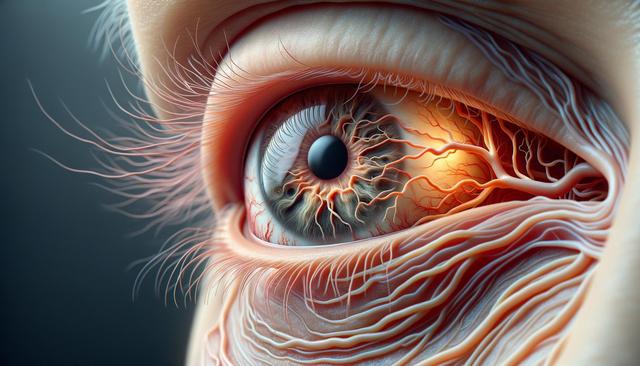What Is Macular Degeneration?
Macular degeneration, often referred to as age-related macular degeneration (AMD), is a chronic eye disease that affects the macula—the central part of the retina responsible for clear, straight-ahead vision. As this condition progresses, individuals may find it increasingly difficult to perform everyday tasks such as reading, driving, and recognizing faces. AMD is one of the leading causes of vision loss in individuals aged 50 and older. There are two main types: dry AMD, which is more common and progresses slowly, and wet AMD, which is less common but can lead to more rapid vision loss. Understanding macular degeneration: a closer look at eye health reveals the importance of early detection and ongoing eye care.
Risk Factors and Causes
Several factors contribute to the development of macular degeneration, with age being the most significant. However, genetics, lifestyle choices, and environmental exposure also play important roles. Some of the major risk factors include:
- Advanced age (typically over 50)
- Family history of AMD
- Smoking, which significantly increases the risk
- Poor diet lacking in fruits and leafy greens
- High blood pressure and cardiovascular disease
- Prolonged exposure to ultraviolet light
While certain risk factors such as age and genetics are non-modifiable, lifestyle changes can help lower the likelihood of developing AMD. Regular eye exams are essential to catch early signs before significant vision loss occurs. Public health efforts and educational campaigns focused on understanding macular degeneration: a closer look at eye health are vital in promoting awareness and encouraging preventive actions.
Symptoms and Early Warning Signs
Macular degeneration often progresses gradually, and early symptoms may not be immediately noticeable. However, being aware of potential signs can make a substantial difference in managing the condition. Some of the common symptoms include:
- Blurry or fuzzy central vision
- Difficulty recognizing faces
- Dark or empty areas in the center of vision
- Need for brighter lighting during tasks
- Distortion where straight lines appear wavy
In wet AMD, symptoms may develop rapidly and can lead to sudden vision loss. Regular screenings, especially for those with risk factors, are critical. Eye care professionals often use tools like the Amsler grid to detect subtle changes in vision. These diagnostic approaches are part of a broader strategy for understanding macular degeneration: a closer look at eye health, which emphasizes the importance of early action.
Diagnosis and Treatment Options
Diagnosing macular degeneration typically involves a comprehensive dilated eye exam. Ophthalmologists may use imaging tests such as optical coherence tomography (OCT) or fluorescein angiography to observe the retina and detect abnormalities. While there is currently no cure for macular degeneration, several treatment options can help manage symptoms and slow progression. These include:
- Anti-VEGF injections for wet AMD to reduce abnormal blood vessel growth
- Vitamin supplements (AREDS2 formula) for dry AMD to slow vision loss
- Low vision aids and rehabilitation services
- Lifestyle modifications like diet improvement and smoking cessation
Early and consistent management can significantly impact quality of life. Treatment plans are often tailored to the individual’s condition, and ongoing monitoring is crucial. For many patients, understanding macular degeneration: a closer look at eye health is the first step toward maintaining independence and visual function.
Living with Macular Degeneration
Adjusting to life with macular degeneration can be challenging, especially as the condition affects central vision critical for most daily activities. However, with the right support systems and adaptive strategies, individuals can maintain a high level of independence. Some helpful approaches include:
- Using magnifying devices and large-print materials
- Installing brighter lighting and anti-glare screens at home
- Learning to rely more on peripheral vision
- Working with occupational therapists who specialize in low vision
- Joining support groups for shared experiences and coping strategies
Technological advancements are also providing new tools for those with AMD, such as mobile apps and electronic reading aids. Education and community resources play a vital role in helping individuals adapt. By fostering understanding macular degeneration: a closer look at eye health, communities and caregivers can better support those affected and enhance their quality of life.
Conclusion: Staying Informed and Proactive
Macular degeneration is a progressive condition that can significantly affect daily life, but early detection, proactive care, and lifestyle adjustments can help manage its impact. By staying informed and seeking regular eye exams, individuals can take meaningful steps to preserve their vision. Public awareness and personalized care plans are key in addressing this widespread issue. Understanding macular degeneration: a closer look at eye health encourages individuals and families to prioritize eye care and remain vigilant about changes in vision, ultimately supporting long-term well-being and independence.




Leave a Reply